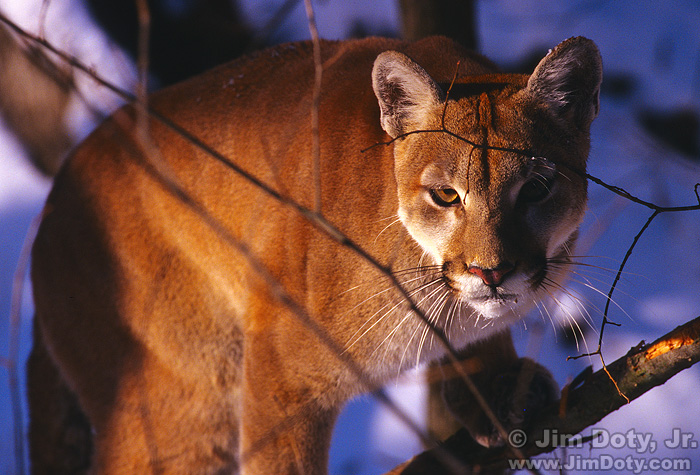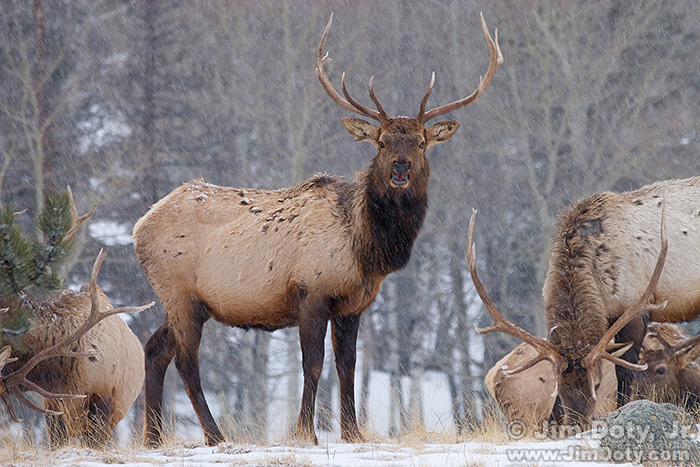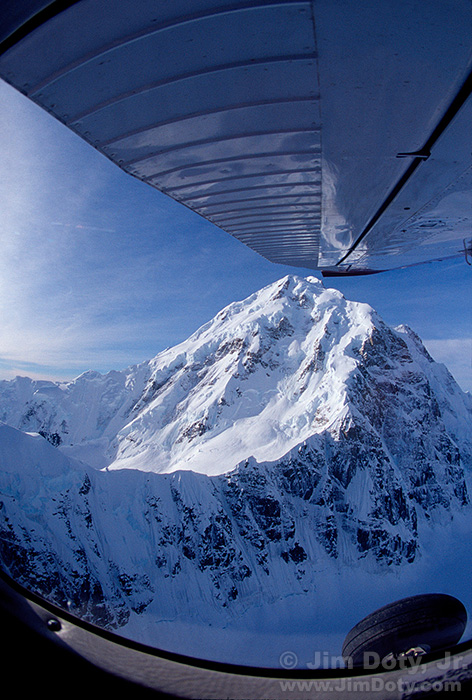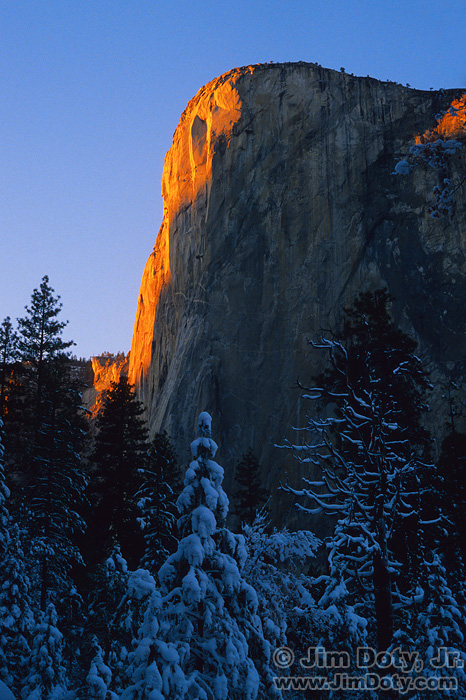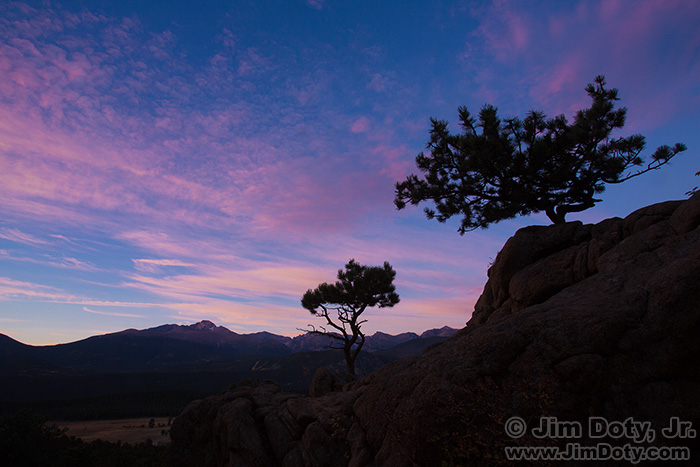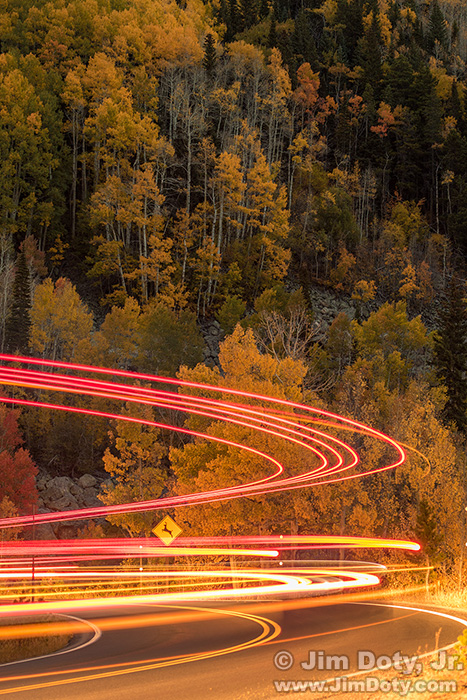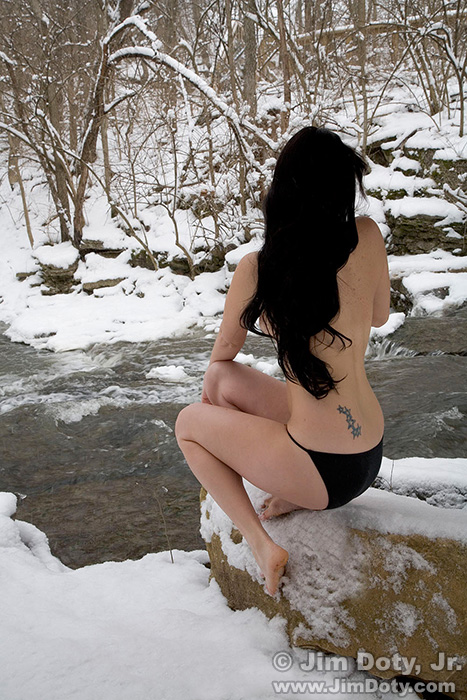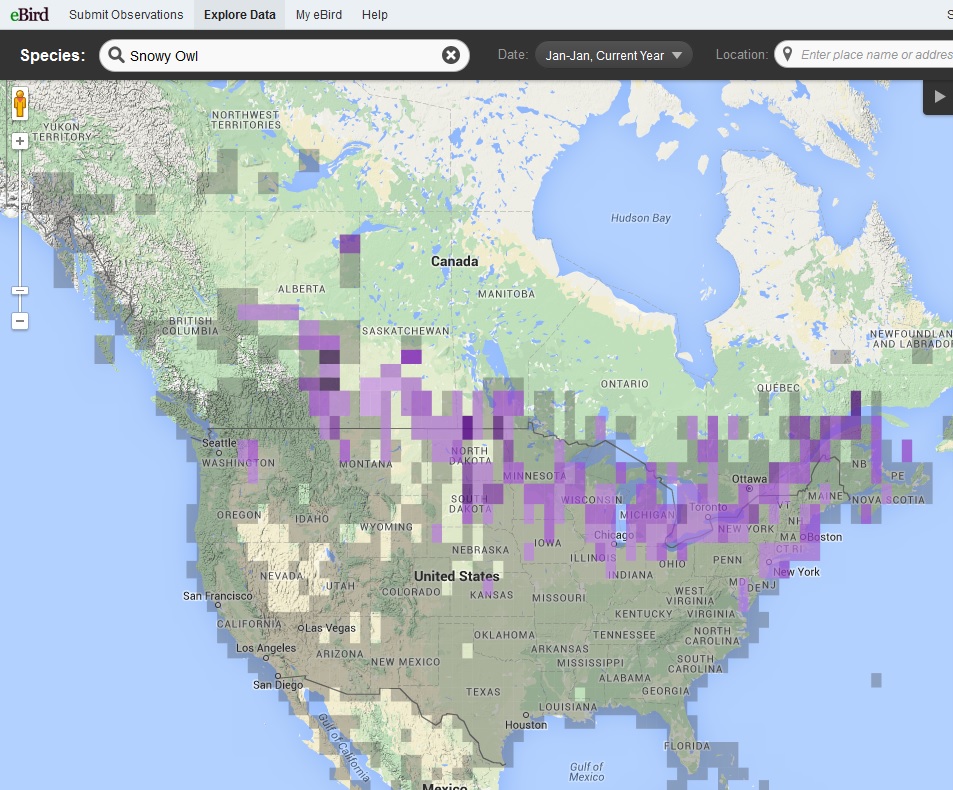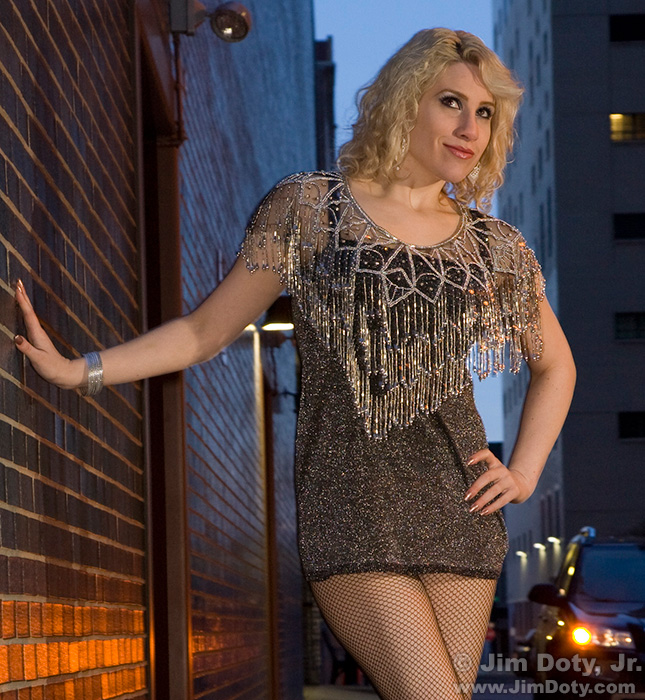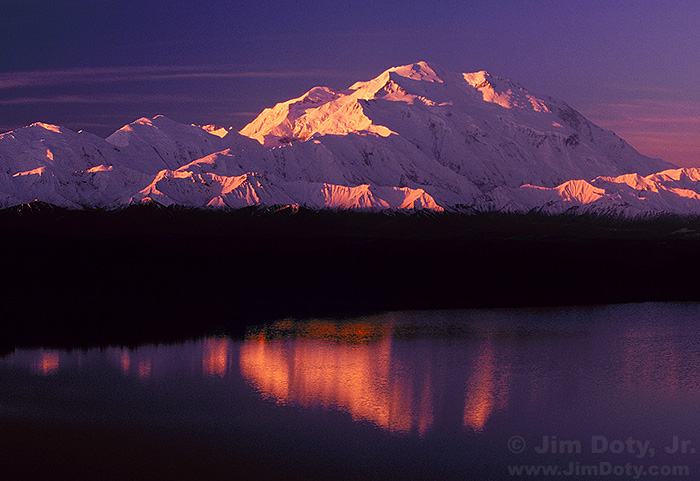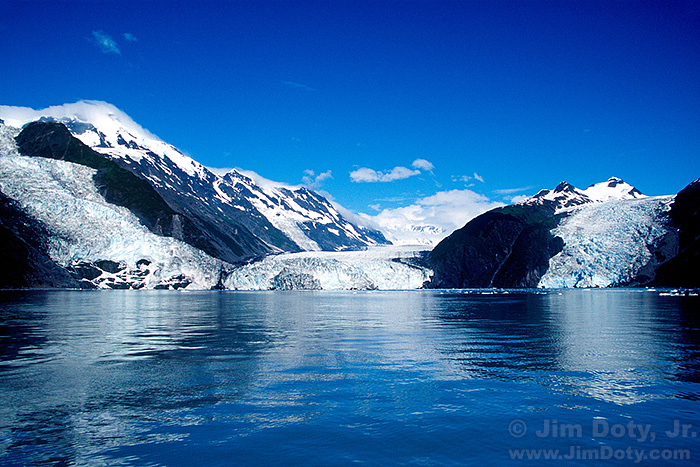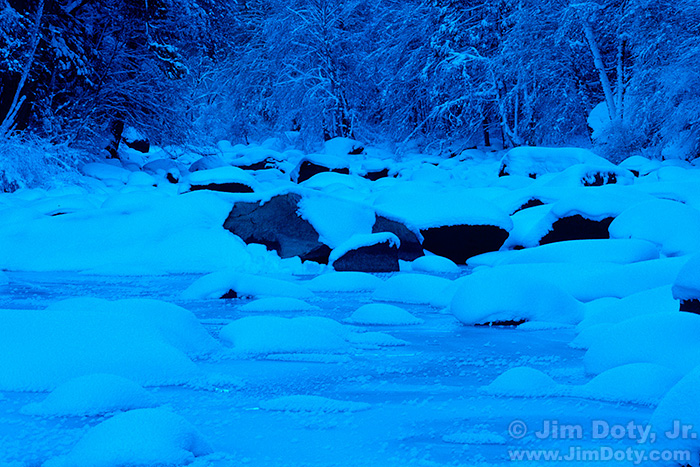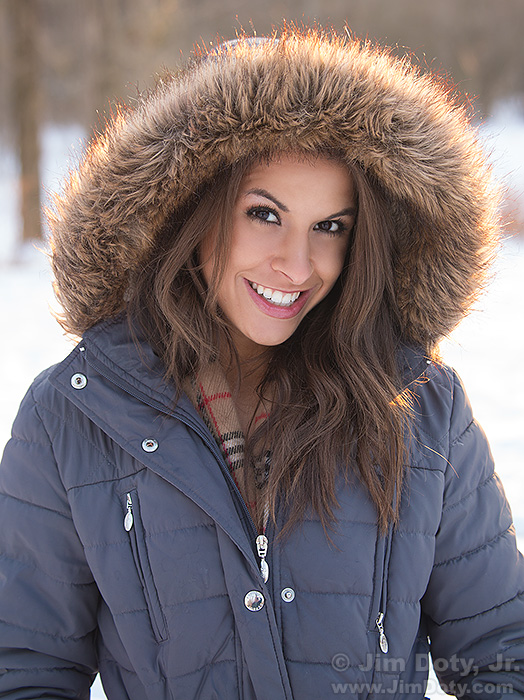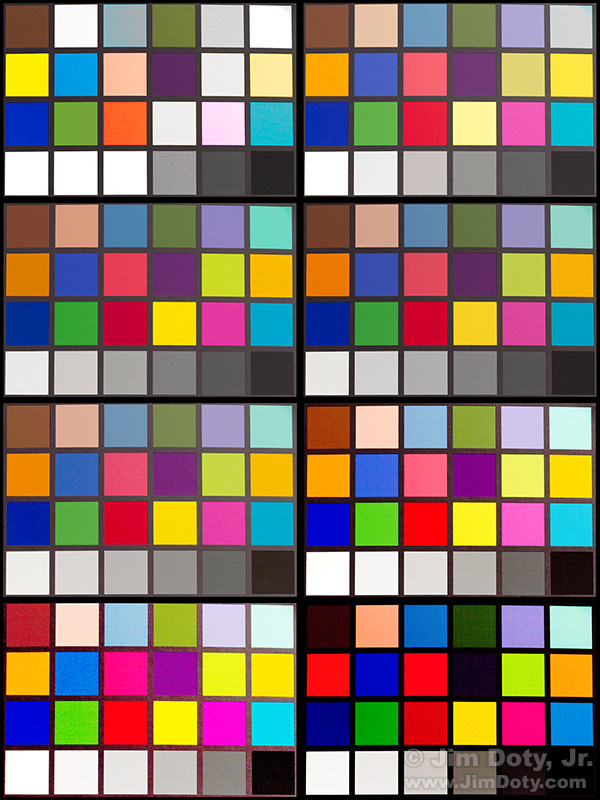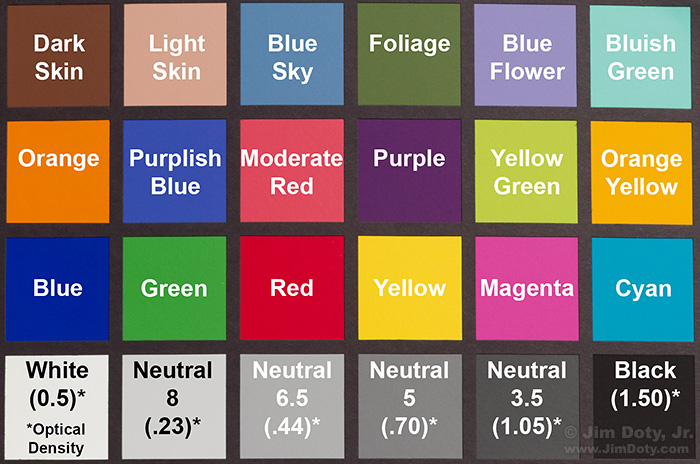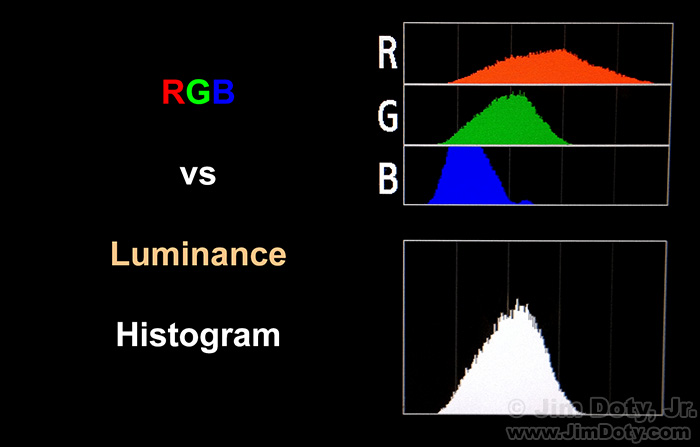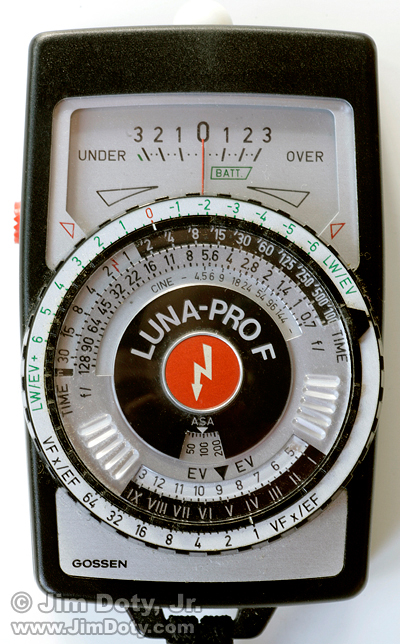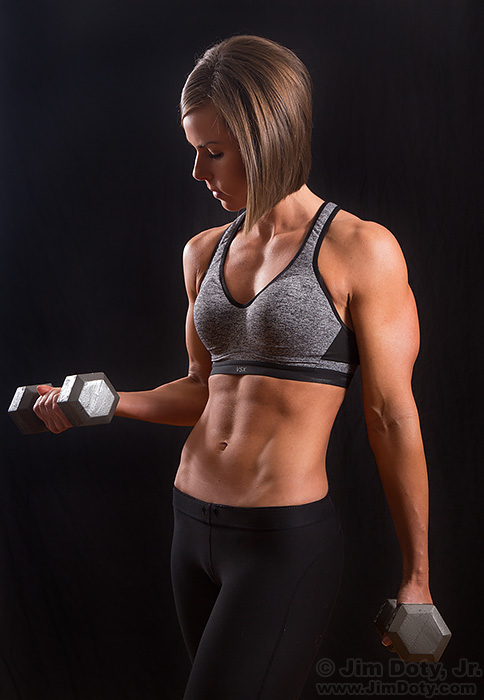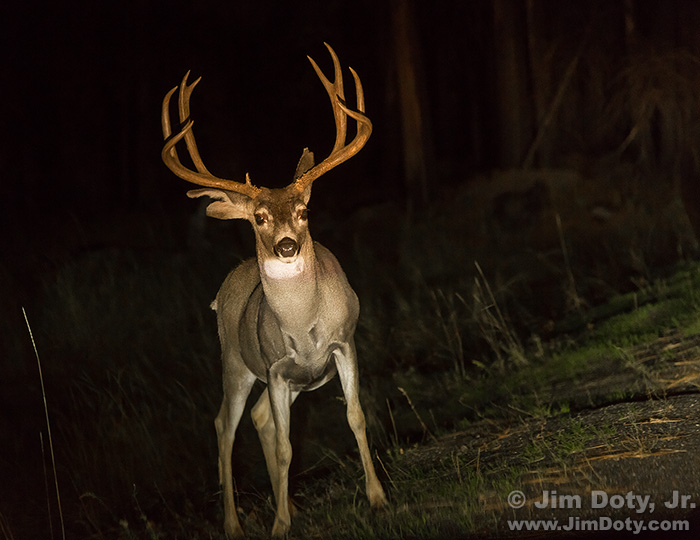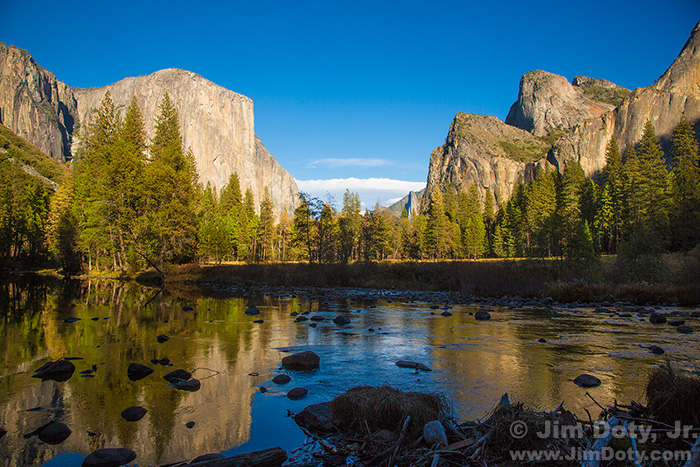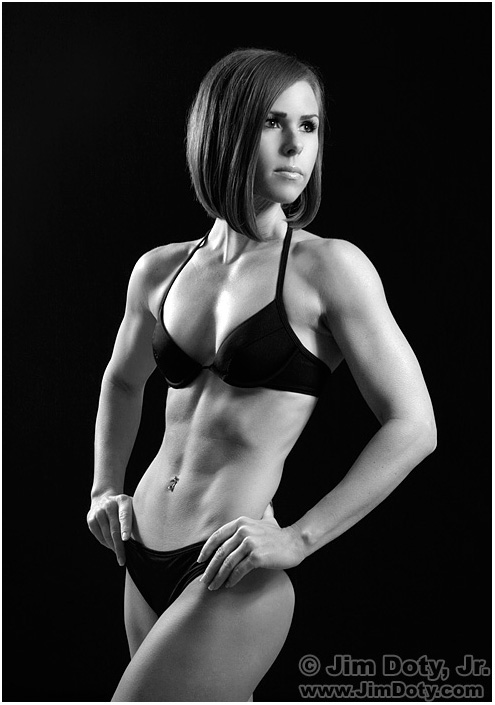Most wildlife are medium to dark in tone, making them a challenge to meter properly in the bright, white tones of winter. If you trust one of your camera’s automatic exposure modes, the odds are good you won’t get the best exposure. If you switch over to manual exposure and make the right decisions, you can get great exposures and better quality photos (more about that later).
Category Archives: Metering
Metering Wildlife in the Snow, Part One
Metering dark toned wildlife in the snow is a major exposure challenge. It is usually best to avoid large “burned out” areas (washed out, featureless white) in a nature or landscape photograph, but with properly exposed snow, the wildlife can be so dark as to lose all texture. On other hand, metering for the wildlife can burn out the snow. So what do you do?
Metering Daytime Winter Scenes
Metering for scenes with a lot of snow can be tricky since the bright snow fools the camera meter. I see a lot of winter photos with gray snow, which means the camera meter did exactly what it was designed to do and the camera owner didn’t know how to use exposure compensation. The solution is quite simple provided you know what to do.
“How To” Series: Winter Photography
In addition to all of the usual photographic challenges, winter provides some extra complications, especially in terms of metering. So I began my series of articles on winter photography. I am in the process of revising and updating this series. I am also revising some related articles and adding new ones. Check out the links below. The articles will help you meet the unique challenges of winter photography. So get out there, have fun, and create some great winter images!
Giving Yourself Options: HDR Photography
In a single exposure your camera can’t capture everything your eyes see in high contrast situations with a wide range of tonalities. HDR photography gives you more options.
Update, November 18, 2017: An updated version of this article is posted here.
Bus Lights at Fern Curve
The clouds were rolling in and the sun dropped behind the mountains when my photography workshop stopped in a parking lot just above “Fern Curve” in Rocky Mountain National Park. Mother nature didn’t provide a sunset so we were on Plan B and then Plan C. It was starting to get dark when we began taking photos. As it gets darker there are some interesting color shifts I wanted the workshop participants to see and photograph.
How to Photograph a Nude Model in the Snow
It is difficult enough to create a beautiful nude image under normal circumstances, much less in the cold and snow. You need to bring some significant skills and experience to the task.
How to Find and Photograph Snowy Owls
Winter is your opportunity to photograph Snowy Owls. When it is cold and snowy there are a lot of snowy owl sightings across the northern U.S. Don’t delay. If the winter turns warmer the owls will head farther north. On the other hand, if the winter turns colder they may move even farther south.
This is the first in an ongoing series of articles on Snowy Owl photography. Originally posted January 25, 2016. Revised and updated Dec. 24, 2017.
How To Work With A Model When The Windchill is 4°
You would think a windchill of 4° Fahrenheit (-16°C) would be too cold for a photo shoot, but not with some models. We booked this January shoot weeks in advance so we knew it would be cold, but we had no idea how cold until the day arrived. Here’s the story behind this image and how to work with a model when it is so cold.
“How To” Series: Winter Photography
In addition to all of the usual photographic challenges, winter provides some extra complications, especially in terms of metering. So I began my series of articles on winter photography. I just finished revising and updating the series. I also revised some related articles and added new ones. They are all linked below. They will help you meet the unique challenges of winter photography. So read the articles, get out there, have fun, and create some stunning images!
This series is updated every year in January. The January 2017 update is here.
The Sunny f16 Rule Isn’t Reliable in Winter
The Sunny f16 rule is really useful on bright sunny days in the spring, summer, and fall, but you can’t rely on it on snowy winter days. It will often lead you astray. There are much more accurate ways to meter in the winter.
Testing Your Camera’s Snow Exposure Latitude
Exposure compensation is one of the most important keys to good exposures, great images, and the best colors your digital camera is capable of producing. Knowing your camera’s snow exposure latitude is one of the keys to using exposure compensation in a winter scene. It is different for every camera model. You won’t find it in your camera’s manual but it is easy to determine with a simple test.
Metering Nighttime Winter Scenes
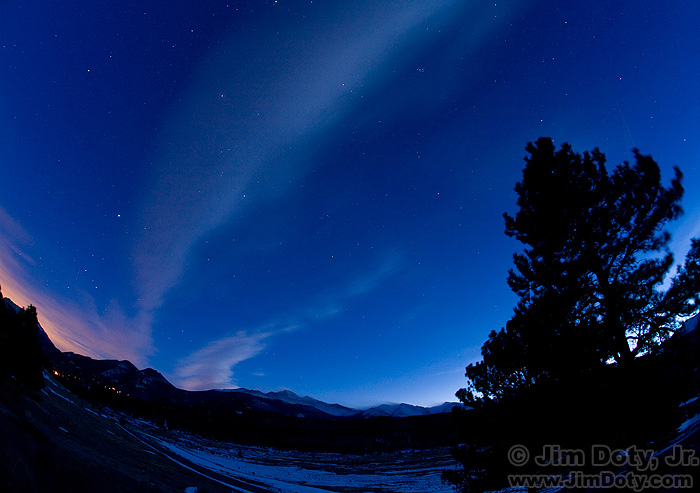
Twilight, Rocky Mountain National Park. Sirius, Canis Major, Orion, Taurus, the Hyades star cluster, and the Pleiades star cluster are all visible in the fading light. Click for a larger version.
You can photograph the night sky year around, but winter brings an added bonus: SNOW! When you don’t have the benefit of moonlight, most of the year you get a black, silhouetted skyline. In winter you have the possibility of including the highly reflective snow. For many photographers winter is their favorite time of year to photograph the night sky.
Metering Evening Winter Scenes
Just like metering daytime winter scenes, the key to metering evening winter scenes is knowing what to meter and deciding how much exposure compensation to use.
Metering Wildlife in the Snow, Part Two
Most wildlife are medium to dark in tone, making them a challenge to meter properly in the bright, white tones of winter. If you trust your camera’s auto exposure modes, the odds are good you won’t get the best exposure. If you switch over to manual exposure and make the right decisions, you can get great exposures and better quality photos (more about that later).
Metering Wildlife in the Snow, Part One
Metering dark toned wildlife in the snow is a major exposure challenge. It is usually best to avoid large “burned out” areas (washed out, featureless white) in a nature or landscape photograph, but with properly exposed snow, the wildlife can be so dark as to lose all texture. On other hand, metering for the wildlife can burn out the snow. So what do you do?
Metering People in the Snow
The white snow in a winter scene can and often does fool a camera meter into underexposing a portrait, so here are the steps to take to get the right exposure. I throw in a few portrait suggestions too.
Metering Daytime Winter Scenes
Metering for scenes with a lot of snow can be tricky since the bright snow fools the camera meter. I see a lot of winter photos with gray snow, which means the camera meter did exactly what it was designed to do and the camera owner didn’t know how to use exposure compensation. The solution is quite simple provided you know what to do.
How To Test Your Camera’s Color Exposure Latitude
Testing your camera’s color exposure latitude is a key to getting good color in your digital photographs. This is a sequel to The Best Colors Come From the Best Exposures. I would suggest you read that article first.
The Best Colors Come From the Best Exposures
This has to be one of the best kept photographic secrets: The more accurate your exposures are, the better your colors will be. Why? If your exposures are off, the colors in your photograph will shift in different directions. You can correct the exposure in post processing, but you can’t correct the color shifts. Since the colors shift in different directions, if you try to correct one color (as you will see below), the other colors will get even worse.
RGB vs Luminance Histogram
If your camera offers both RGB and luminance histograms, choose RGB. An RGB histogram is one of your most valuable exposure tools. A luminance histogram can lead to bad exposures and poor colors.
POTD: In A Back Alley, Part 2 (Fill Flash)
Last August I was in a back alley taking pictures against this brick wall. I liked the location and decided to come back and shoot here again. In August the light was pretty even. This time I needed to make some fill flash decisions.
“How To” Series: Winter Photography
Update: December 18, 2015. This series was revised and expanded last winter (January through March 2015) and I will update it again beginning in January 2016, but for some of you winter is NOW, so I am re-posting this set of links so you have them now.
Update: January 9, 2016. As of today five of articles have been revised and updated from last year’s versions. I have also written several new articles that are related to this series and included links. Over the next few days I will revise and update the rest of the articles. Stay tuned.
In addition to all of the usual photographic challenges, winter provides some extra complications, especially in terms of metering. So I began my series of articles on winter photography. This year I revised three prior articles and added six new ones. They will help you meet the unique challenges of winter photography. So read the articles, get out there, have fun, and create some stunning images!
Photo Shoot: Using a Halo Softbox with a Yongnuo Radio Controlled Flash System
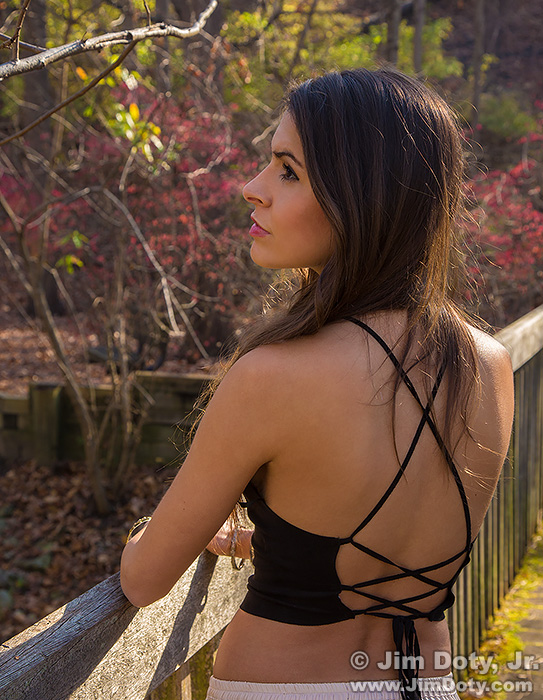
Kristina. Sunlight coming from the right. Halo softbox with Yongnuo speedlite providing light from the left.
After testing a Bob Davis 45 inch Halo Softbox and Yongnuo YN600EX-RT radio flash on my most available model (my dog), I needed to test it out on a real model. Opportunity called in the form of a message from Kristina, a professional model based in Los Angeles (and an absolute delight to work with). She would be in Ohio for Thanksgiving and she wanted to schedule a shoot. I was leaving town for Thanksgiving, but fortunately for us we had one day to shoot after she arrived and before I left.
The Best Incident Light Meters
There’s no question that in some complex metering situations, an incident light meter can be quicker, faster, simpler, and more accurate than the meter in your camera. Many incident light meters can also measure light from an electronic flash, a huge bonus when you are using a flash in the manual mode.
Using the Histogram to Check Studio Flash Exposures
When using studio flash units, usually the best way to check your exposures is to use an incident light meter which is capable of metering flash exposures. But what if you don’t have an incident flash meter? Or what if you have a subject that absorbs a lot of light? Or a subject that reflects a lot more light than your typical photographic subject? You can double check your exposure settings by using the histogram on your camera. FYI: Do not trust the LCD image on the back of your camera to judge your exposures.
Deer in the Headlights – Literally
A “deer in the headlights look” is a common euphemism so I couldn’t resist taking some pictures when a deer was literally in my headlights. I was driving around Yosemite Valley taking pictures in the moonlight when I came upon two bucks browsing on the side of the road.
How to Photograph “Gates of the Valley”
Your Camera Loves “Middle Gray” – And Why That is Important
Your camera is in love with middle gray. The quicker you learn how to deal with this infatuation, the better your photos will look, including all of your color photos.

